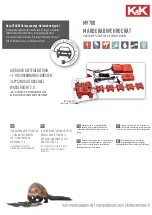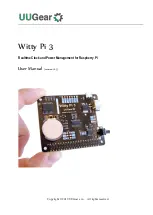
For Sales and Support, Contact Walker EMD • Toll-free: (800) 876-4444 • Tel: (203) 426-7700 • Fax: (203) 426-7800 • www.walkeremd.com
vector lags behind the commanded voltage vector by an increasing
amount. This causes the torque to roll off with speed, even though
the motor current remains constant.
Sine Commutation Drives
By employing more modern microcontroller technology to
brushless servo drives, sine commutation can be achieved. This
type of drive uses resolver or encoder feedback to determine the
rotor position angle. This information is used to look up sine
function values in a lookup table in the drive’s microcontroller
memory. By applying three 120¡ spaced sine based voltage vectors
to the three motor legs, a rotating voltage vector can be applied at
any angle relative to the motor’s axis. Ideally, this commutation
scheme produces sinusoidal current waveforms on each of the three
motor phases. Since this waveform closely matches the motor’s
back EMF waveform, torque ripple is dramatically reduced.
In addition to better commutation, most sine commutation drives
use microcontroller or DSP (Digital Signal Processor) technology to
implement their control loop filters digitally. This eliminates
potentiometer tuning and problems associated with analog circuit
drift and aging. This same technology allows implementation of
other features not possible in drives without the computing
capability of these more modern drives.
Though these drives are a considerable improvement over older
brushless servo drive technologies, they still suffer some limitations.
The most significant are reduced bus voltage utilization and lack of
individual motor phase current control.
By using the sine table lookup calculation for commutation, only
75% of the available bus voltage can be effectively used. Though no
drive can achieve 100% utilization of available bus voltage, a sine
commutation drive sacrifices more maximum speed at a given
motor torque than other drive technologies. This is the price paid
for achieving low ripple motor torque.
The other limitation of these drives is the same as the older drive
types. Because the traditional sine drive commutation does not
resolve individual motor leg currents, it is subject to the same
tolerance-induced torque errors (ripple) and the same phase lag
issues.
2 : T H E O R Y
O F O P E R A T I O N
2 - 4
















































